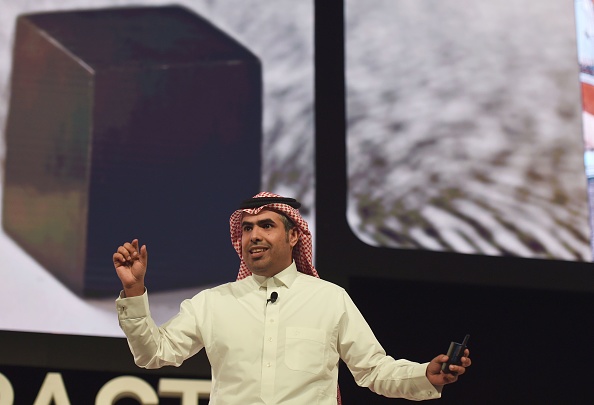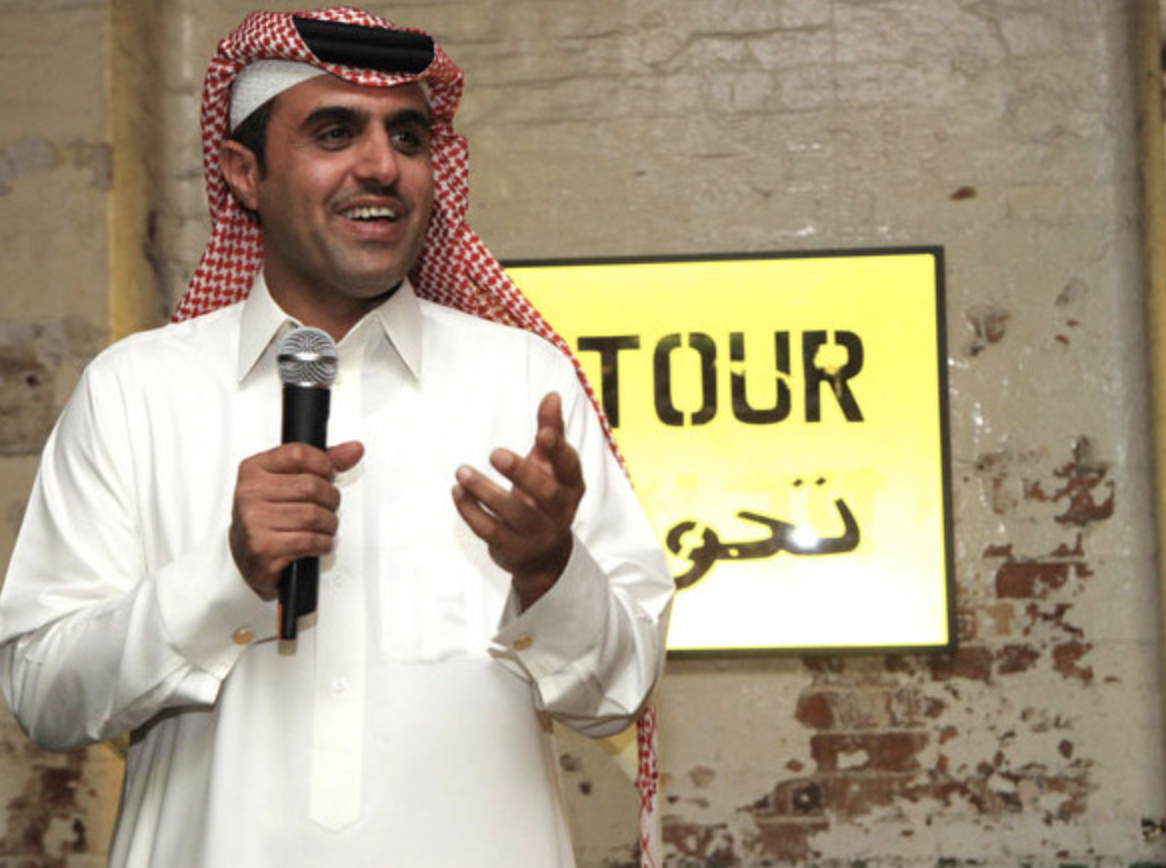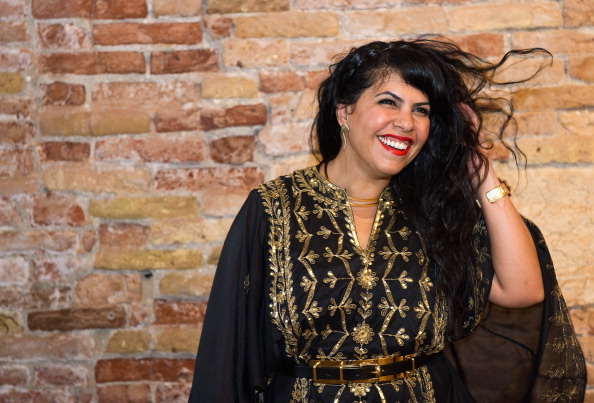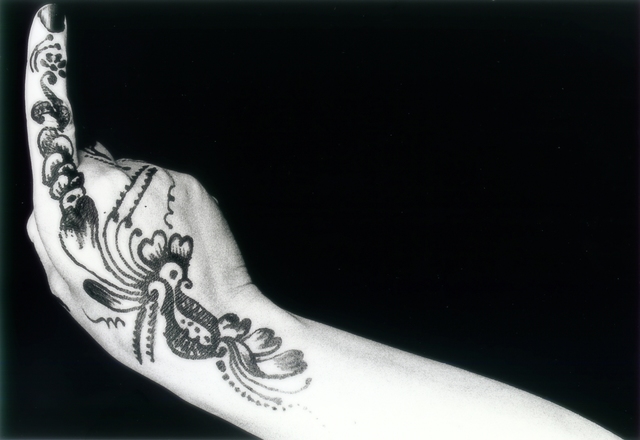Saudi Arabia has been changing -rapidly - and art and culture are playing a pivotal role in this significant social shift. Last year Crown Prince Mohammed bin Salman launched the creation of the Misk Art Institute, an artistic-lead organization operating under the auspices of the state-funded Misk Foundation. In 2017, King Salman inaugurated the Snøhetta-designed King Abdulaziz Center for World Culture in Dammam. The bold initiative was developed by the Saudi Aramco oil company to promote cultural development within the Kingdom. Meanwhile, Art Jameel announced the construction of a new development to open in winter of 2019-2020 named Hayy: Creative Hub which will house a theatre, exhibition, event spaces, and artists’ studios, as well as spaces for 12 partner organizations. This eruption of artistic creativity comes as the government announced a projected $64 billion investment, in partnership with the private sector, into cultural infrastructure over the coming decade.
With a thriving art scene within Saudi Arabia and the Kingdom’s return to the Venice Biennale this year (11 May - 24 November) after an 8-year hiatus, as well as international museums dedicated to the country’s art, the profile of Saudi art looks set to continue rising. Here is a look at some of its most exciting and pioneering contemporary artists:
AHMED MATER

Hailing from Abha, the capital of Asia province in Saudi Arabia, Ahmed Mater is one of the most influential artists from the kingdom and has been integral to the establishment of the country’s artists on the global scene. A man of many masks, as he puts it, Mater is also a qualified GP, a landscape photographer, and the face of one of the region’s largest mobile phone companies.
Mater remains rooted in his local identity. Embracing diverse media, his art incorporates both social critique and respect for religion in an era of globalization, consumerism, and urbanization.
He entwines expressive and politically engaged artistic claims with the scientific objectives of his medical training, enmeshing the two realms to explore their connections and contradictions. His socially engaged artistic practice is furthered through his involvement in cultural initiatives inside and beyond the Kingdom, including Al-Meftaha Arts Village, Abha; pharan.studio, Jeddah. In 2003, he co-founded the Edge of Arabia collective, aimed at expanding knowledge of and support for contemporary Middle Eastern art and culture to a global audience. The initiative has connected a new generation of Saudi artists with international audiences. His work has also been on display in galleries across the globe.
Mater’s installation at the British Museum in 2012, Magnetism, conveyed one of the most essential elements of Hajj, that all Muslims are considered in the eyes of God whether rich, poor, young or old. He used tens of thousands of Iron filings placed within the magnetic fields of two magnets, only the upper one of which is visible. The iron filings represent a unified body of pilgrims all of whom are attracted to the Ka’ba as the center of their world.
In 2016, he captured the often unseen side of Mecca during the hajj season - the migrant workers, the tireless construction and the eye-opening sprawl - in his exhibition Mecca Journeys, presenting a compelling portrait of the massive urban redevelopment underway in the holy city.

ABDULNASSER GHAREM

A lieutenant colonel in the Army, Abulnasser is one of the most significant conceptual artists of his generation and one of the most important promoters of contemporary Saudi art, both in bolstering art education at home and encouraging its exhibitions abroad.
Mater’s work references heritage but is also politically and socially astute. His art is informed by his unique interpretation of the social conditions of his home country and his direct interaction with society. Gharem chooses not to display his work in a studio, instead, he incorporates art into his day-to-day life, searching for opportunities for interventions in his surroundings.
In 2011, at Christie’s Modern and Contemporary Arab, Iranian and Turkish Art sale in Dubai, his piece called Message/Messenger (pictured above) evoked a round of applause when it was sold for $842,500 (Dh3.09 million), making him the highest-selling living Arab artist at the time. The piece is a three-meter-wide wood and copper installation of a golden dome symbolizing the Dome of the Rock in Jerusalem. Inside the dome was a dove.
Following his record-breaking sale at Christie’s, he co-founded the Edge of Arabia nonprofit arts organization alongside Ahmed Mater. In 2013, he founded Gharem Studio, a nonprofit arts organization where young Saudi artists can come to learn, create and hang out.
MANAL ALDOWAYAN

Born in Dhahran, in the East of Saudi Arabia, Manal AlDowayan is one of the most recognizable and critically acclaimed Saudi contemporary artists. While studying advanced computing (in Saudi Arabia, then Boston and London), she learned how to shoot and develop photographs. She spent years working as an engineer at a national oil company and now devotes herself entirely to her art.
As a photographer, visual poet, and artist, her artistic practice revolves around themes of active forgetting, archives, and collective memory, with a large focus on Saudi women and their representation. She has also documented other social groups like oil men and has addressed the impact of mass media on propagating intentional erasing of identities. Her participatory projects have attracted hundreds of women to use art as a new platform to address social issues.
Her art combines a graphic yet refined aesthetic: elegant portraits of women, neon writing, what would seem glamourous motifs, but an incongruous element will always be thrown in to disrupt the scene.
AlDowayan’s artworks are part of the permanent collections of the British Museum, the Jordan National Museum of Fine Art, the Abdul Latif Jamil Foundation, the Delfina Foundation in London, and the Barjeel Foundation in Sharja, among other prominent institutions.
Her photograph “Pointing to the Future” was exhibited in New York at the 49th Session of the United Nations Commission on the Status of Women (CSW) in 2005 and her “I Am” series was exhibited at the Clinton Public Library in Little Rock, Arkansas as part of the Club de Madrid’s 2012 annual conference, entitled “Harnessing 21st Century Solutions: A Focus on Women.”










